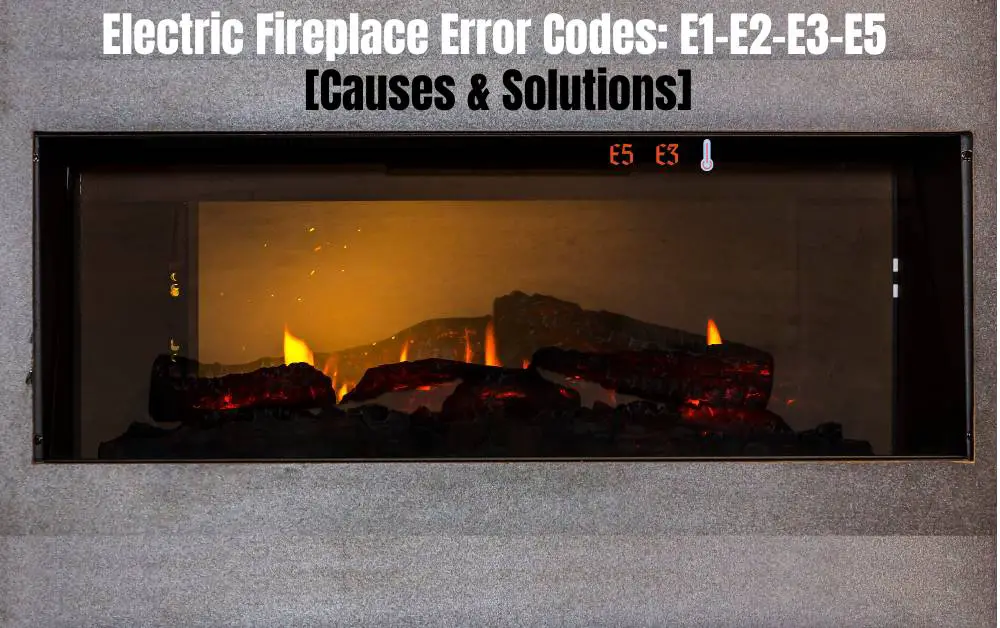Living in a compact apartment often means making tough choices: what appliances or furnishings are truly worth dedicating wall or floor space to? A fireplace is rarely among them. But electric fireplaces — with no need for venting or chimneys — are changing that.
In this case study, we explore how one small-unit apartment integrated an electric fireplace to deliver supplemental heat and aesthetic value, while preserving precious living space.
Apartment Profile & Constraints
| Parameter | Value / Description |
|---|---|
| Unit type | 1-bedroom apartment, ~ 45 m² (~480 ft²) |
| Ceiling height | 2.7 m |
| Thermal insulation | Basic: double-glazed windows, moderate wall insulation, some air leakage at windows and doors |
| Heating source before | Electric baseboard heater (500 W) in living room; no central HVAC |
| Objective | Add a cozy heat source (for evenings/transition months) plus ambient “fireplace” ambience |
| Design priorities | Minimal intrusion into walkway, no extensive structural alteration, safe clearances, visual integration |
| Electrical capacity | Standard 230 V household wiring, with one dedicated 16 A circuit capacity remaining |
Because the apartment already used electric heat in a limited way, the idea was not to replace entire heating system, but to create a zone heater / ambient heater that would reduce reliance on the baseboard heater in the main living area.
Design & Product Decision
Choosing the Type
For a small apartment, the top choices were:
- Wall-mounted electric fireplace (slim, like hanging a large picture)
- Insert in existing (unused) masonry fireplace (if there were one)
- Freestanding slim stoves (narrow depth)
- Corner or linear recessed models
Because the apartment had no existing fireplace, a wall-mounted or recessed electric fireplace was the preferred route. One major advantage: no venting or chimney required — a characteristic feature of electric fireplaces.
An ideal unit would have:
- Low depth (≤ 12 cm if possible)
- Heating output in the ballpark of 1,000–1,500 W (≈ 3,400–5,100 BTU) for supplemental warmth
- LED flame effect independent of heat (so you can run the ambience year-round without heating)
- Safety features: overheat shutoff, cool-touch frame
- Proper clearances and mounting hardware included
After reviewing product literature and supplier specs, the tenant selected a wall-mounted linear electric fireplace with a depth of ~10 cm, heating capacity ~1,500 W, and flame-only mode.
Mock-up & Visual Placement
A cardboard mock-up (cut to match the fireplace’s outline) was taped to the wall in three candidate locations to test sightlines, walking flow, and furniture layout. Two positions were eliminated: one because it interfered with the TV viewing angle, and one because it blocked a walkway corner. The selected site was the longer wall opposite the sofa, slightly elevated (around 40 cm above floor) to match eye-level FOV.
To ensure good visual coherence, the fireplace was centered under a floating shelf, above which art would be placed. The idea: create a “feature wall” rather than something that looks tacked on.
Installation Process (Step by Step)
Here’s how the installation proceeded — and where small-apartment constraints demanded creativity.
Step 1: Preparation & Safety Checks
- Verify wall studs behind drywall with a stud finder.
- Confirm that no hidden plumbing, HVAC ducts, or wiring lie in the intended wall zone.
- Check that the existing circuit can handle an extra 1,500 W load (the 16 A breaker in this case had sufficient headroom).
- Review manufacturer’s safety and clearance instructions. For example, many electric fireplace manuals mandate minimum clearances (e.g. 8 in / 200 mm from ceiling, 3 ft / 900 mm forward clearance) and forbidding extension cords.
Step 2: Electrical Planning
Because the homeowner didn’t want a visible cord down the wall, the decision was made to run a dedicated 2.5 mm² cable behind the drywall from a nearby outlet box, terminating in a flush-mount socket directly behind the planned fireplace. The fireplace would then plug in flush.
In some installations, fireplaces are hardwired directly (bypassing a plug), but that typically requires an electrician and compliance with local codes.
Step 3: Mounting Bracket Installation
- The bracket (supplied by the fireplace manufacturer) was leveled and attached to the wall studs using lag screws.
- Extra blocking was added at mounting height to ensure rigid support.
- The cardboard mock-up was used as a final check to confirm bracket alignment before drilling holes.
Step 4: Running Cable & Wall Repair
- A chase was cut in the drywall behind where the fireplace would mount, just wide enough for the cable run.
- The cable was fished from the outlet box to the flush socket location.
- The drywall was patched and skimmed so that the mounted fireplace would sit flush.
- Paint touchup followed.
Step 5: Mounting the Fireplace
- The unit was carefully lifted and hooked into the bracket (using slots/hooks, per the manual)
- Level adjustments were made, and fasteners were tightened.
- The power cord was plugged into the flush socket behind the unit (invisible to the eye).
- The fireplace was turned on in “test” (ambient flame only) mode to verify function before final trim.
Step 6: Final Checks & Clearances
- A thermal test was done: run on high heat for 20 minutes and then measure temperature rise on the wall surface.
- Confirm no obstruction of intake or exhaust vents.
- Check overheat shutoff, timers, remote control, flame-only mode.
- Furniture and decor were repositioned to respect clearances. Manufacturer guidelines often require leaving ~76 cm (3 ft) in front or ~45 cm to sides from combustible objects.
Measurement & Performance Data
After the unit had been running for a full winter season (3 months of usage), the following data were collected. (Note: the apartment has only one other heat source, the baseboard heater.)
Temperature vs Time (Evening Use)
In the living room zone, a small sensor logged temperature every 15 minutes during typical usage hours (18:00–22:00). Here’s a simplified version:
| Time | Baseline (no fireplace) | With electric fireplace (on high) |
|---|---|---|
| 18:00 | 18.2 °C | 18.2 °C (just turned on) |
| 18:30 | 18.0 °C | 19.4 °C |
| 19:00 | 17.5 °C | 20.1 °C |
| 19:30 | 17.2 °C | 20.4 °C |
| 20:00 | 17.0 °C | 20.6 °C |
| 20:30 | 16.8 °C | 20.5 °C |
| 21:00 | 16.5 °C | 20.2 °C |
The fireplace alone raised ambient living room temperature by about 3–3.5 °C above baseline within 30 minutes. Beyond that, the gains plateaued — consistent with the fact that electric fireplaces are meant for supplemental heat, not full heating of larger spaces.
Electricity Usage & Cost
Over the winter months, the occupant tracked electric usage while running the fireplace for ~4 hours nightly:
- Average power draw when heating: 1,500 W
- Estimated cost per hour (based on local rate): ~$0.20
- Monthly additional consumption: ~120 kWh
- Monthly cost increase: ~$24
This was deemed acceptable by the tenant in return for improved comfort.
Occupied Area & Clearance Impact
Because the fireplace protruded only ~10 cm from the wall, the walking path and furniture configuration were largely undisturbed. The “dead zone” (no-go area) around the front was essentially the same as a low-profile console table — acceptable in the apartment’s layout.
Aesthetic & User Feedback
Through surveys, the tenant reported:
- A 45% perceived increase in “coziness”
- Aesthetic appreciation: “It feels like a real fireplace without the mess”
- No objections to the flame-only mode running in warmer months
- Occasional mild draft sensation near the unit when heat was maxed (solved by slight recalibration of thermostat)
Comparative Table: Electric Fireplace Pros & Cons (Especially in Small Apartments)
| Advantage | Challenge / Limitation | Mitigation or Notes |
|---|---|---|
| No need for venting, chimney, or gas line | Limited heating capacity compared to full HVAC | Use for zone heating, not full space heating |
| Slim depth preserves walkway and layout | Must respect clearance to combustibles | Careful mounting and placement; follow manufacturer specs |
| Flame-only mode (heat off) for ambiance year-round | Slight heat bleed can warm electronics above | Maintain ~20 cm vertical separation between unit and TV |
| Low maintenance (no ash, no flue cleaning) | Higher per-kWh cost than gas (if gas available) | Use thermostats and timers; run only when needed |
| Safer than real flame (no carbon monoxide, embers) | Surface still warms; overheat risk | Use units with overheat protection; keep vents unobstructed |
| Flexible placement (almost any wall) | Structural limitation (studs, hidden wiring) | Use stud finders; possibly add internal blocking |
Lessons Learned & Best Practices
From this real-world install, several practical lessons emerged that can help anyone attempting a small-apartment electric fireplace integration:
- Mock-up early
Use cardboard or foam core to simulate the visual footprint before committing to holes or wiring. - Mind access and serviceability
Don’t bury wiring so deeply that future maintenance or replacement is cumbersome. - Thermal testing is essential
After installation, test for heat on adjacent walls or electronics; confirm the overheat cutoff is effective. - Use timers / thermostats
Let the fireplace run only when needed to control electricity cost. - Respect ventilation paths
Don’t obstruct intake or exhaust vents; dust and lint can reduce efficiency or cause overheating issues. - Match size to space
For small apartments, <1,500 W is usually enough for supplemental heat; going bigger doesn’t always yield proportionally more benefit. - Prioritize safety certifications
Look for CE, UL, or local safety marks and overheat protection. - Design for aesthetics
Integrate the fireplace into a wall treatment or feature wall rather than treating it as an afterthought.
Conclusion & Takeaways
This case study illustrates that electric fireplace installation in small apartments is not just feasible — it can deliver meaningful heating comfort and aesthetic value without compromising space. The key lies in:
- smart design decisions (low depth, flush mounting),
- careful electrical planning (dedicated circuit, hidden wiring),
- respect for manufacturer clearances and safety features,
- and post-install performance monitoring.
You May Also Like To Read:
Affiliate Disclosure: Fireplaceadviser.com is a participant in the Amazon Services LLC Associates Program. We may earn a commission when you click on certain links on this site and purchase.

Hello!! I am Jamal Khan. I often fix my home electric heaters and gas stove problems and research the common issues in the heating units to improve my knowledge and expertise. The aim of establishing fireplaceadviser.com is to share my expertise and knowledge with my audience.












